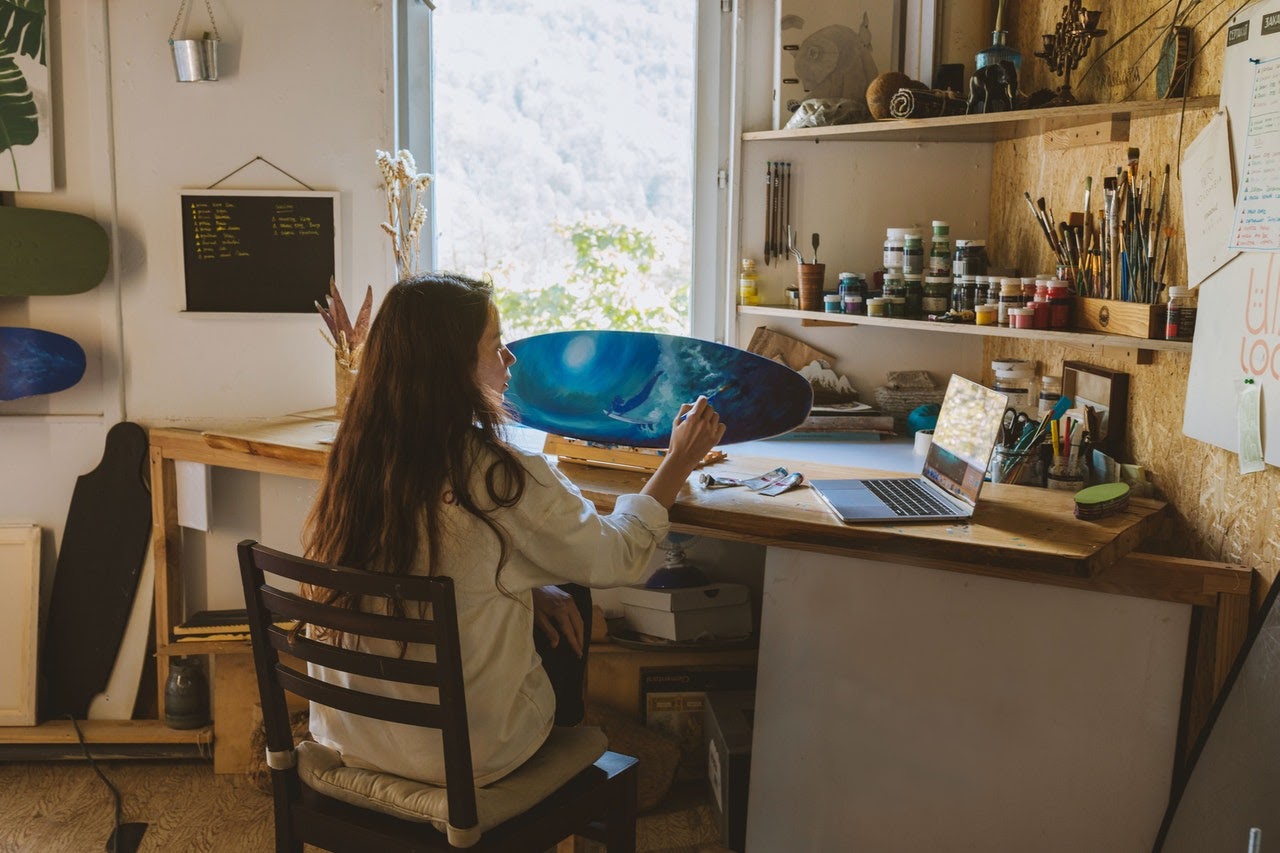Art is subjective, and among the vast varieties of paintings, some artists and art lovers strongly prefer oil paints. It could be because of the quality, color dynamics, and versatility of oil paints. If you’re an artist, you know that though getting started with oil paints isn’t rocket science, it takes some techniques to master the craft.
For one, you’ll have to be mindful of your technique because, unlike acrylic paint, oil painters deal with toxic solvents with relatively longer drying time. Experienced oil painters know their way around the brushes, mediums, palettes, and tools necessary to get the job done.
But how do you properly get your oil on canvas if you’re just starting?
Simple – You need to get your basics right!
So continue reading to learn three essential oil painting tips to help you paint like a pro.
3 Basic Oil Painting Tips For New Painters
1. Acquaint Yourself With Your Painting Materials
Once you are ready to get into oil painting, you have to find out which tools and materials work best. Usually, beginners in oil painting will prefer to collect items like rags, brushes, palettes, painting surfaces, and many others.
According to many experts, the most vital tool in an oil painter’s arsenal is the brush. This is because they possibly last your entire life provided you take good care of them. Therefore, you’ll have to make the right choices when it comes to choosing your paintbrush.
Go for different shapes such as fan, square, and round shapes. Then you look at brushes made from materials like bristles or sable hairs. It can be tempting to try shopping for them online. However, it’s always better to go to a local shop and buy all your materials in person, especially the brush.
This ensures that you can observe the physical differences of each brush before paying money.
2. Choose Limited Number of Palettes
One aspect of starting that can easily be overwhelming is the choosing of palettes. You will have to resist the urge to buy every color you want in your finished painting. Instead, begin with a limited number of carefully chosen tubes, mainly primary colors. In other words, limit your palette.
According to Sedrick Chisom, an artist and lecturer at Virginia Commonwealth University, this is the most productive way to start your oil painting journey. He also advised new painters to avoid buying secondary colors, at least on their first trip to the paint shop. But there is a valid reason for this approach.
The limited choice of contrasting colors compels the beginning artist to concentrate on creating value. Thus, you’ll need to pay close attention to details like the shades of your color (light or dark) rather than chroma or intensity.
You’ll also find that you can create different hues and colors by yourself by mixing your primary colors. So why buy them from the store in the first place? As an artist, it’s always good practice to know how to mix your colors.
3. Repetition is Vital
Learning to master the technical side of oil painting requires a lot of practice and repetition. Hence, you’ll have to get a still object or image and paint it as many times as possible. As monotonous and boring as this may sound, it will pay dividends down the line.
Repeating the same painting process of a fixed subject matter over and over frees you of the obligation to decide what goes into your imagination. Thus, you liberate your creative thinking to improve your painting techniques gradually. This kind of progress is valid and reliable.
Also, you will begin to notice the patterns of good brushstroke that produce better work and pay closer attention to the fine details of oil painting techniques. Ultimately, the beginning painter will start to find their style and isolate what produces a good finish.
Bonus: Practice Safe Painting
Last but certainly not least, it’s a must to consider your working environment for safety. Most oil painting mediums such as turpentine give off toxic fumes that can render you dizzy, faint, or even cause respiratory problems after long term exposure.
Aside from these, turpentine is a highly inflammable medium. Therefore, you need to remember that objects like turpentine-socked rugs can cause fire outbreaks if disposed of improperly. Due to the nature of the mediums involved in oil painting, you need to find a spacious and well-ventilated place to paint. Your painting space must also have safety measures in place with suitable waste disposal.
Plus, some pigments associated with oil paints can contain dangerous chemicals. Therefore, you’ll have to wear protective gear like respirators and gloves to avoid absorbing these hazardous chemicals through breathing or your skin.
Conclusion
Like any other art, oil painting takes a lot of time and practice to master. Therefore it’s essential to have the mindset of a life-long learner if you want to be any good. Armed with these basic techniques, you can begin your journey toward mastery, not forgetting to have fun and enjoy your art. And who knows, maybe one day your name will also be carved into history alongside the likes of Michelangelo, DaVinci, and Picasso.




Leave a Reply